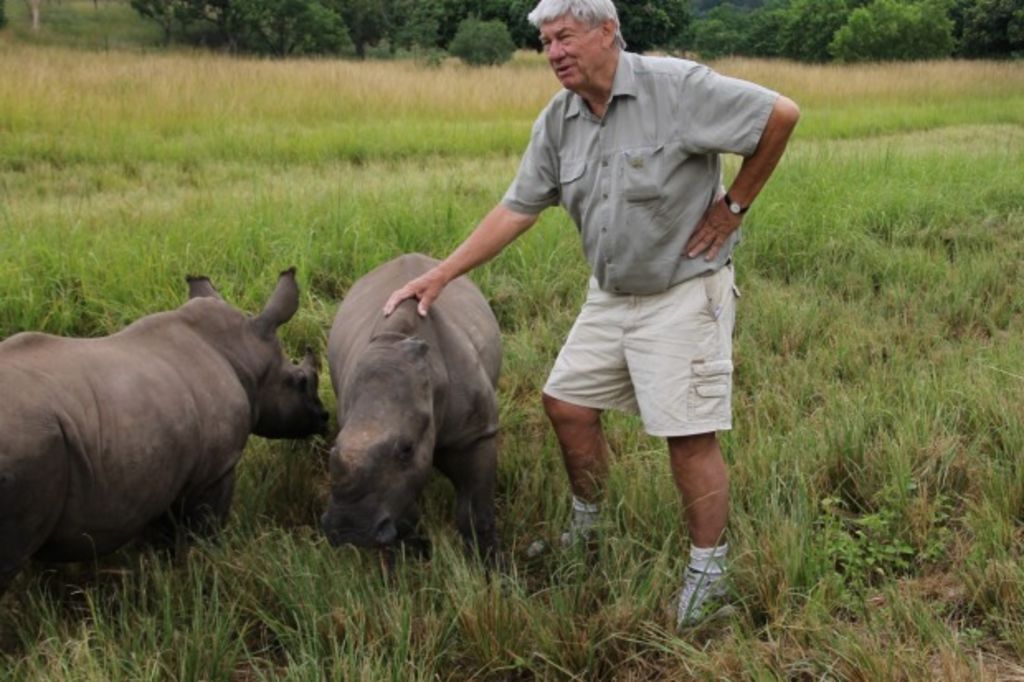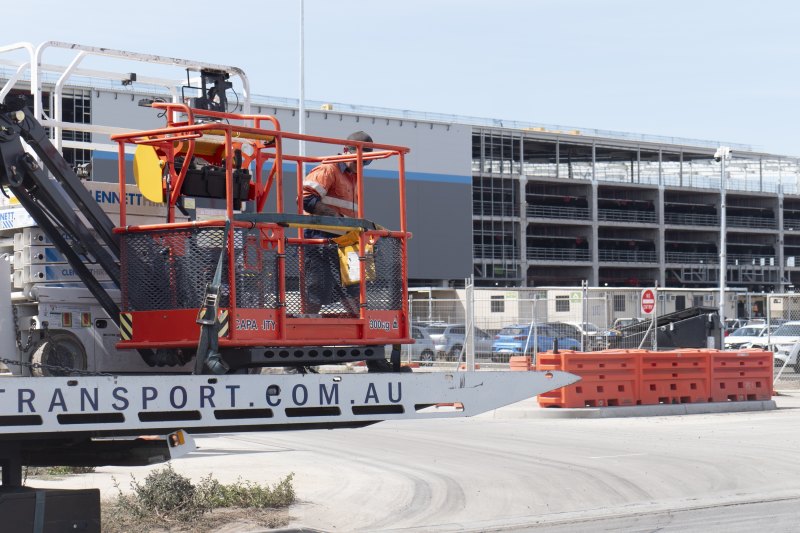From real estate to rhinos: The Australian Rhino Project to find homes for six rhinos in 2016

A former NSW real estate agent has turned from finding homes for people to dedicating his life to finding them for rhinos.
In an audacious bid to help the endangered species survive, Ray Dearlove, who used to operate property agencies on the Central Coast, set up The Australian Rhino Project and is now planning his first airlift of six rhinos from South Africa to Australia early this year.
Using the skills he learnt in six years of helping humans relocate as the director of McGrath Estate Agents and then the owner of three agencies for Laing + Simmons, Dearlove is negotiating new homes for the animals, which are in dire threat of extinction from poachers in their native Africa.
“Real estate is one of the hardest jobs I have ever done,” says Dearlove, aged 67, who was born in South Africa but migrated here in 1986 with his family. “It’s a 24/7 grind, and your phone never sleeps.
“But working to save rhinos from terrible deaths at the hands of poachers, and building a safe insurance breeding herd in Australia, is much harder still … yet it’s infinitely more rewarding. If we do nothing, we could conceivably see the end of rhinos in our lifetime, so I’m doing everything I can to ensure that Australia is doing its bit to help these magnificent animals survive.”
 Dearlove hopes the rhinos end up happy and relaxed enough in Australia to breed. Photo: Supplied
Dearlove hopes the rhinos end up happy and relaxed enough in Australia to breed. Photo: Supplied
Dearlove, also known as “Rhino Ray”, has successfully located six young rhinos to make the trip to Australia, and he hopes they’ll be flown here in a private charter flight as early as April. At first, they’ll be put into quarantine under the auspices of The Department of Agriculture in Canberra and the South African government, in Taronga Western Plains Zoo in Dubbo.
Then he’s locating homes for them across Australia to ensure their safety and comfort, so they’ll hopefully be happy and relaxed enough to breed.
“We want the best possible environment for them,” he says. “Eventually our plan is to put them out in the bush so they’ll be as close to their natural habitat as possible.”
The Australian Rhino Project was founded in 2013 when it was realised how much danger both white and black rhinos faced from poachers eager to kill them for their horn which, on the black market, is more valuable than gold.
From the beginning of 2015, the South African government has no longer released official poaching statistics. But various sources suggest that the numbers of rhinos killed for their horns in 2015 were running at slightly more than 100 a month – more than three a day.
These statistics suggest that the total 2015 number will exceed the 2014 record of 1215 killed, with a range of between 1250 to 1500 dead rhinos. There seems to be consensus that a tipping point – where the kill rate exceeds the birth rate – has now been reached.
The Australian Rhino Project, with its goal of preventing extinction in the wild of one of the oldest mammals on the planet by bringing as many as possible to safe havens in Australia over the next five years, is now appealing for funds from the public to help its work – with all donations fully tax deductible.
“We welcome all donations from the public,” says Dearlove, who’s also served as general manager of the Sydney University Football Club, had a stint at the Brumbies and currently runs his own events management company. In addition, he’s planning an escorted rhino conservation safari over to South Africa later this year, in conjunction with The Classic Safari Company.
“You never know, a knowledge of real estate could come to our aid again. With the market that’s boomed in Sydney over the last few years, people have a lot more equity in their homes, and sometimes a little more cash to spare. This is such a great cause … and it’s wonderful that Australia can do so much to help these glorious creatures.”
We recommend
We thought you might like
States
Capital Cities
Capital Cities - Rentals
Popular Areas
Allhomes
More







